An important element that defines the style of a watch is the material used to make the timepiece. While conventional materials like stainless steel and gold remain the most prevalent when making watch cases (and bracelets) some brands have also turned to other materials like ceramic, bronze, titanium, synthetic sapphire, and carbon fiber.
Several high-end watch brands, such as Richard Mille and Hublot, focus on using high-tech material alloys to manufacture cases, which offer benefits like lightweight architecture, ultra-durability, and high corrosion resistance. Other brands, such as Rolex and Omega, have proprietary formulas for various shades of gold. It’s also worth pointing out that the two-tone watch, defined as combining two different colored metals (usually gold and steel), has been a prevalent timepiece trend for decades. Welcome to our primer on popular watch materials, where we’ll cover everything from traditional metals to cutting-edge composites.
Stainless Steel
Stainless steel is an iron and chromium alloy that’s highly corrosion-resistant. This trait makes it a particularly good choice for sports watches and tool watches. Although we take it for granted now, stainless steel was the culmination of a long historical string of metallurgical advancements. Stainless steel wasn’t common until the 1920’s, and it remained fairly expensive until the 1940’s. Then it quickly began to supersede the chrome-plated zinc and sterling silver cases of yesteryear. Today, most luxury watch brands use 316L stainless steel but Rolex is known to use 904L steel, which the brand now calls Oystersteel.
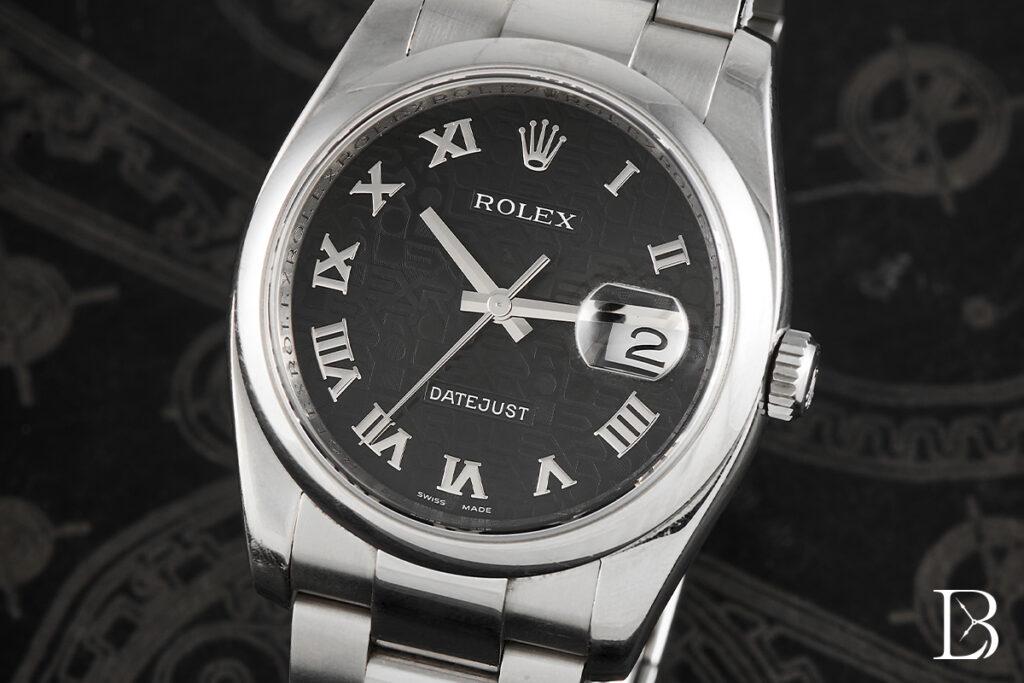
Some of the characteristics of stainless steel include:
- White metal
- Affordable
- Lightweight
- Corrosion resistant
- Sporty and casual style
Don’t Miss: Six New Audemars Piguet Code 11.59 Watches Now In Steel
Steel is currently the most popular material used in watches, among both collectors and the mainstream. It’s not a passing fad, either; there are books specifically focused on collecting steel watches dating back to at least the 1990’s.
Gold
Gold used in watchmaking is alloyed (in other words, mixed) with various other materials to achieve the desired color. In addition to ubiquitous yellow gold, there is also white gold, red gold, and rose gold.
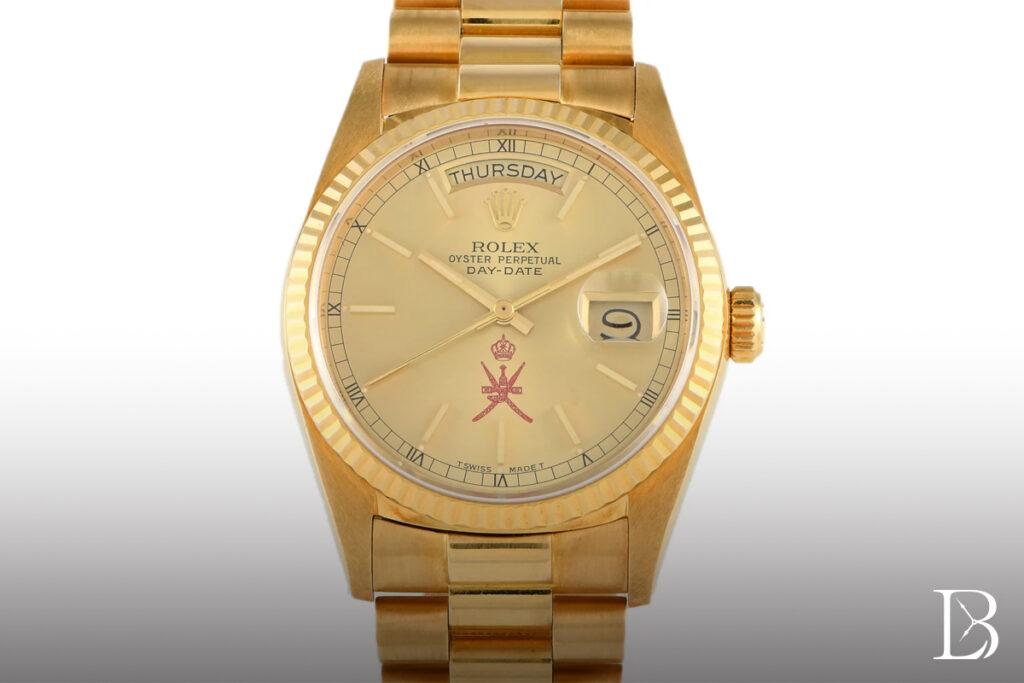
Today’s high-end watch brands mainly use 18k gold to make gold cases, which is 75% pure gold mixed with other metals. Furthermore, some watch companies have formulated their own gold alloys to differentiate them from other brands. For instance, Rolex rose gold watches are made from “Everose,” a proprietary rose gold alloy that promises to never fade.
Learn More: Every Everose Watch Produced by Rolex
Omega also uses proprietary gold alloys for some of its watches including Sedna Gold (red gold), Moonshine Gold (pale yellow gold), Canopus Gold (white gold), and Ceragold (an alloy of gold and ceramic).
Finally, since Hublot is known for innovative materials, it too uses proprietary gold materials for some of its watches. There’s scratch-resistant Magic Gold (gold mixed with boron carbide) and the company’s branded rose gold, which is called King Gold.
Some of the characteristics of gold watches include:
- Expensive
- Prestigious
- Heavy
- Variety of colors
- Dressy and formal style
Platinum
Platinum is rare and expensive and therefore, an ultra-prestigious choice when it comes to watches. Platinum watches are normally made from 95% pure platinum alloy, generally alloyed with ruthenium—this is called 950 platinum. Watch brands usually reserve platinum cases for their finest collections. Keep in mind that 18k gold is only 75% pure, and platinum is denser than gold. Combine those factors and it means you need about 1.5x more platinum than the amount of gold in a comparable watch. So, you can see why platinum watches are not cheap.
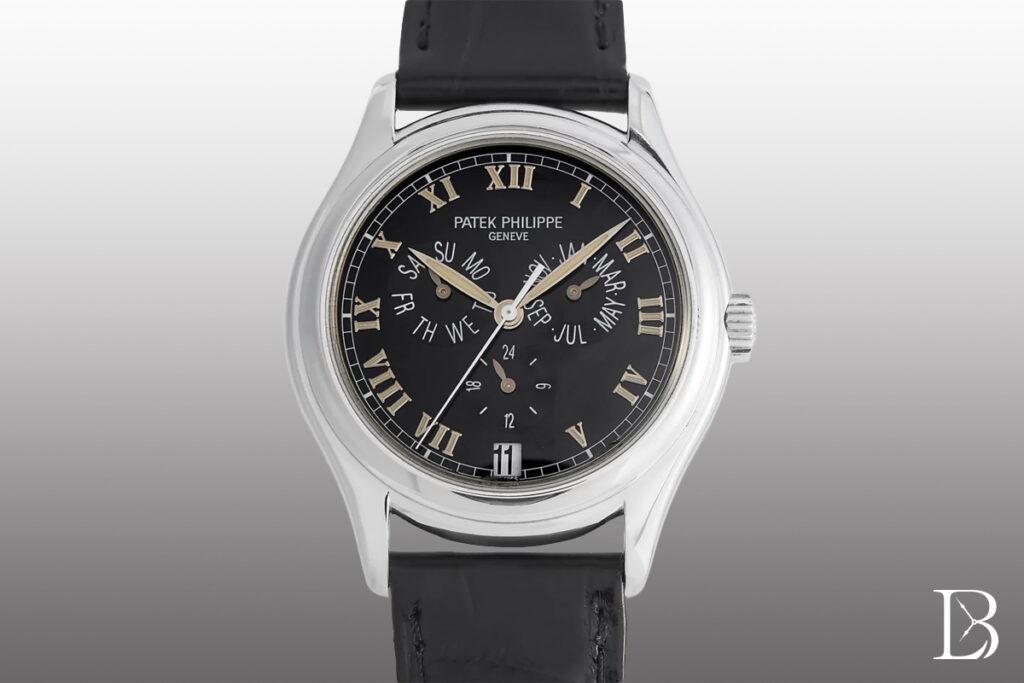
Platinum Patek Philippe watches include a diamond set in between the lugs at 6 o’clock to distinguish them as platinum pieces. What’s more, Rolex reserves ice blue dials exclusively for platinum models.
More about Rolex and Patek:
New and Discontinued Rolex Watches for 2023
New Patek Philippe Watches for 2023
Some characteristics of platinum watches include:
- White metal
- Expensive
- Prestigious
- Heavy
- Rare
See it on the Wrist: Platinum Audemars Piguet Millenary Tradition d’Excellence Cabinet
Although palladium is a separate elemental metal, it does belong to the platinum group metals (PGM). Palladium shares a similar color to platinum but it is less dense. A few luxury brands, such as Ulysse Nardin, Cartier, and MB&F have used palladium to make watch cases.
Titanium
Although titanium watches have been around since the 1970s, they have become immensely popular just over the last decade. Titanium watches are generally alloyed with iron, aluminum, vanadium, molybdenum, or other metals.
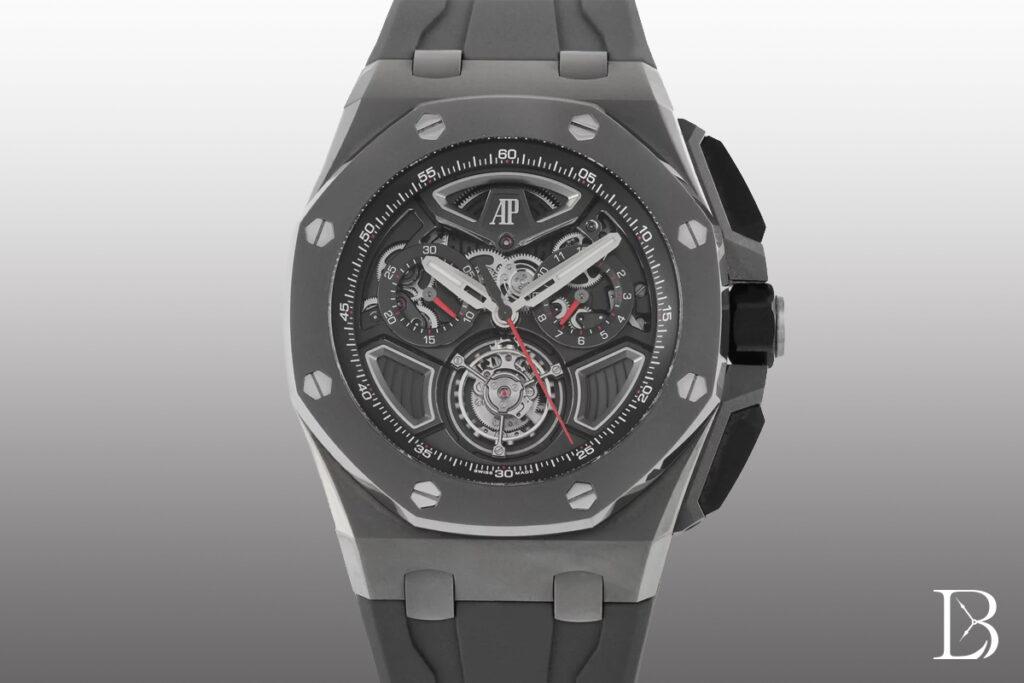
It’s a particularly good metal for watch cases since not only is it much stronger than steel it’s also lighter and more corrosion-resistant. Some watch brands use titanium for their very large watches to keep them as light as possible despite big case diameters.
More on Titanium Watches:
Rolex introduces the Deepsea Challenge – Its first ever Titanium watch!
Titanium Audemars Piguet Royal Oak Concept Tourbillon Chronograph
Titanium Richard Mille Extra-Flat RM67-01
Some characteristics of titanium watches include:
- White metal
- Ultra-lightweight
- Corrosion-resistant and heat-resistant
- Anti-magnetic
- Hypoallergenic
- Sporty and casual style
The most common type of titanium used in watchmaking is Grade 5 titanium, which is also a favorite of the aerospace industry.
Bronze
One intriguing material that’s been getting plenty of attention among Swiss watchmakers is bronze, which not only develops a patina over time but every watch will morph differently depending on the wearer and the environment.
The first bronze watch debuted in 1988 in the form of the Gérald Genta Gefica Safari. However, the watch was ahead of its time and never really took off. It is Panerai that can be credited for popularizing bronze watches when the brand launched the Luminor Submersible Bronzo PAM00382 bronze diving watch in 2011.
More on Panerai Watches:
How to Sell a Panerai Watch
The Most Trending Brands from Watches & Wonders 2023
Rolex GMT-Master Alternative? The Panerai Luminor GMT PAM 1535
In addition to Panerai, other brands such as Tudor, Omega, Oris, Longines, TAG Heuer, and IWC have all offered bronze watches in their catalogs.
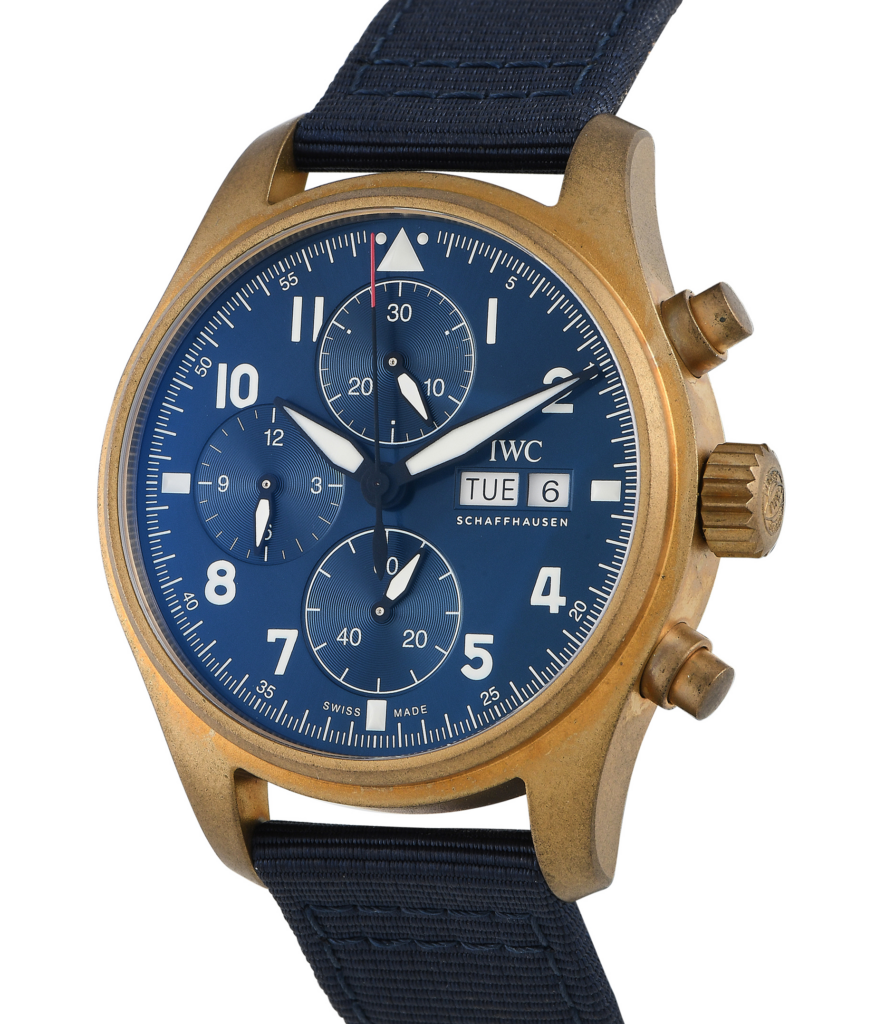
Some characteristics of bronze watches include:
- Heavier than steel
- Less expensive than gold
- Warm golden color
- Will develop a unique patina over time
Bronze as a watch material is polarizing — some people love that aged weathered look while others aren’t fans of the overt tarnishing.
Ceramic
The use of ceramic, which is zirconium oxide, has flourished in watchmaking over the last few decades thanks to the material’s modern look and resistance to scratching and fading. It is a non-metallic material that’s created by heating and cooling, and can be produced in a wide range of colors.
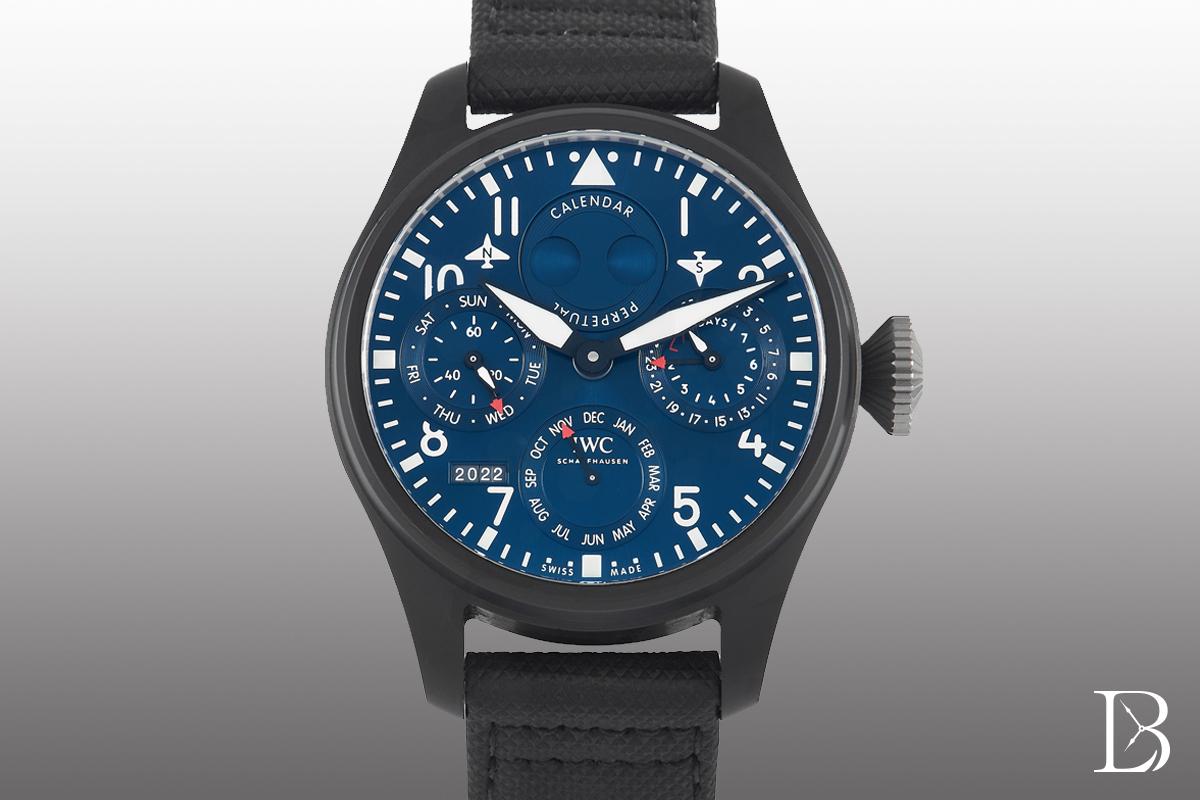
While some brands like to use ceramic for bezels, others make entire watches from ceramic too. The world’s first ceramic watch case appeared with the launch of the IWC Da Vinci Perpetual Calendar in 1986. The Rado Ceramica arrived in 1990, featuring a case, crown, and bracelet fashioned entirely in ceramic. And we can’t forget the impact that the black Chanel J12 ceramic watch made when it was unveiled in 2000 — this is the watch that popularized ceramic watches.
More Ceramic Watches
New Royal Oak Offshore in Full Ceramic
Black Ceramic Audemars Piguet Royal Oak Perpetual Calendar
Some characteristics of ceramic watches include:
- Lightweight
- Scratch-resistant
- Fade-proof
- Wide range of colors
- Sleek modern style
While black is the most common color for ceramic watches, the trend for colored ceramics is quickly picking up in the luxury watch space with brands like Omega, Audemars Piguet, Richard Mille, and Hublot leading the charge.
Carbon Fiber
Carbon fiber is a woven-textured material that’s most commonly associated with high-end sports cars. Carbon composites are now becoming a popular material for luxury watches too. This dark material is not only lightweight and strong but also has a distinctive pattern that is unique to each case.
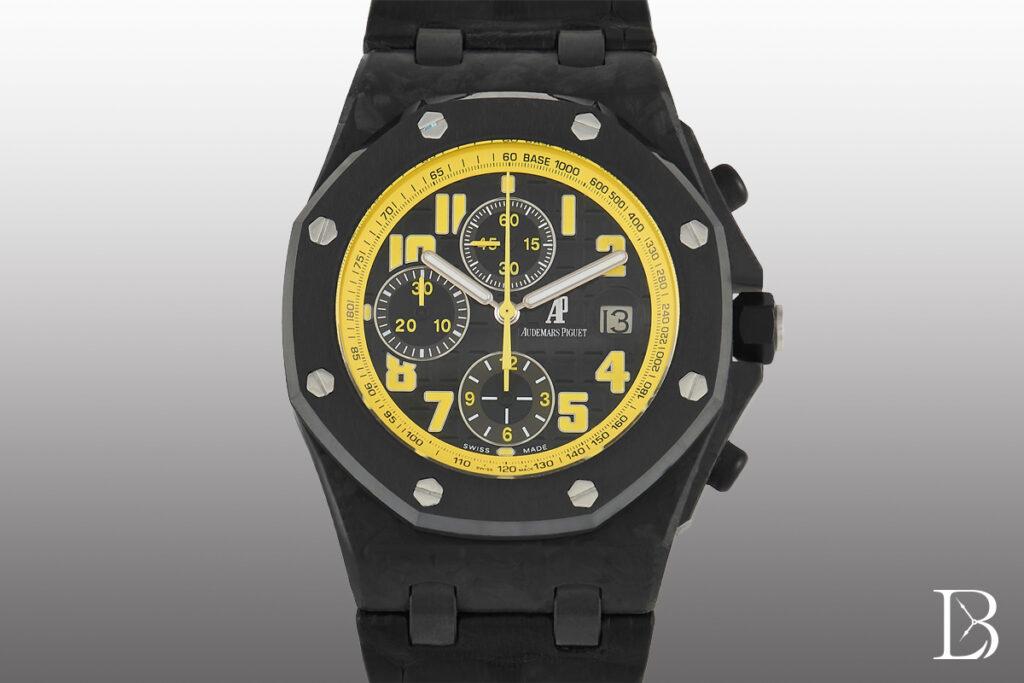
Richard Mille has long been a pioneer in advancing carbon composites as watch materials. For instance, Carbon TPT (or Thin Ply Technology) is comprised of stacked layers of dry carbon fibers impregnated with resin, which are then vacuum-sealed to remove air pockets and treated under heat and pressure. The result is an ultra-light yet tough material with a distinctive grain pattern. While the first Richard Mille Carbon TPT was black, the company has now managed to not only make multiple colors but also create Gold Carbon TPT infused with gold leaf.
More on Richard Mille Watches:
Richard Mille Prices: Historical and Current From Actual Sales Numbers
Why Are Richard Mille Watches So Expensive?
Some characteristics of carbon fiber watches include:
- Lightweight
- Strong
- Unique textured finishing
- Sleek and modern style
Synthetic Sapphire
Prized for its scratch-resistance and ultra-transparent surface, synthetic sapphire has long been a go-to material for the glass component of watches. In recent years, however, some watch companies such as Hublot, Richard Mille, Jacob & Co., Greubel Forsey, and MB&F, have been making watches with cases made entirely from sapphire crystal, which allows a fantastic view of the inner workings of the watch.
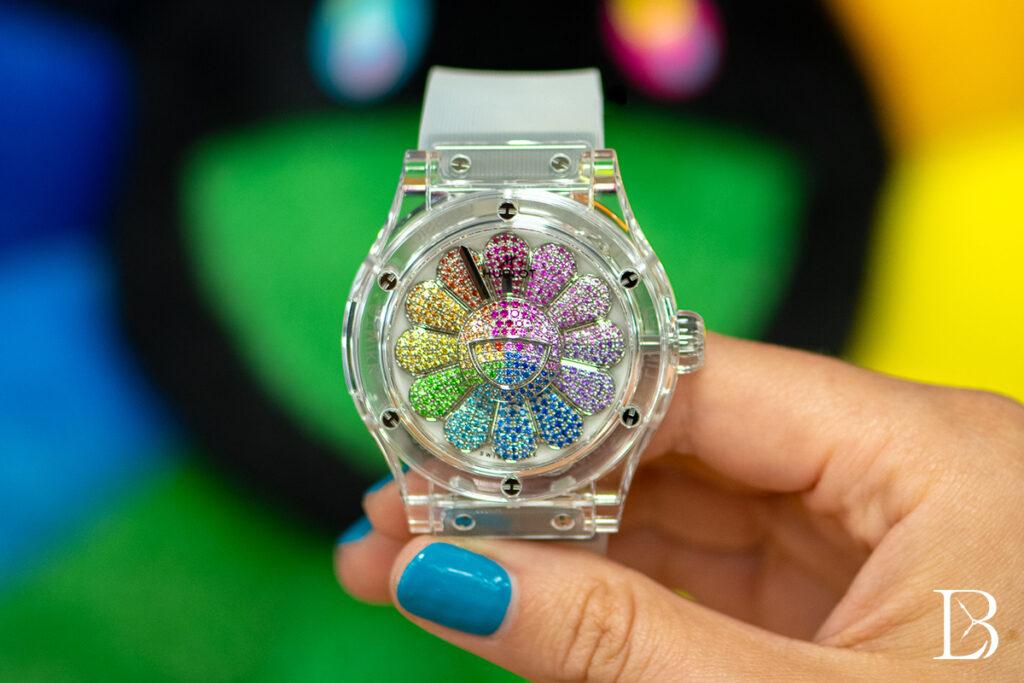
In addition to colorless sapphire watches, some brands also make colored sapphire watches in vibrant shades. Sapphire is a notoriously difficult material to work with, and creating colorful sapphire watch cases is even more arduous.
Some characteristics of sapphire watches include:
- Scratch-resistant
- Transparent
- Expensive
- Sleek and modern style
How to Choose the Best Watch Material
When shopping for your next luxury watch, consider how the material of the watch will meet your specific needs. Do you need something robust like stainless steel, lightweight like titanium, flashy like gold, or sleek like ceramic? Are you willing to pay the big bucks for a platinum piece or even a modern sapphire case? A watch’s material will affect how, when, and where you can wear it — so make sure you’ve thought about it carefully before choosing your newest timepiece. Take a look at the chart below that compares watch materials by price, weight, color and scratch resistance.
Watch Materials Comparison Chart
| Material | First Used In Watch Cases | Price Range | Weight | Color | Scratch Resistance |
| Stainless Steel | 19th Century | Affordable | Moderate | White Metal | Prone to Scratching |
| Gold | 16th Century | Expensive | Heavy | Yellow, Rose, or White | Prone to Scratching |
| Platinum | Early 20th Century | Ultra Expensive | Ultra Heavy | White Metal | Prone to Scratching |
| Titanium | 1970s | Moderate | Ultra Light | White/Grey Metal | Prone to Scratching |
| Bronze | 1980s | Moderate | Heavy | Muted Gold Will Change Color | Moderately Scratch Resistant |
| Ceramic | 1980s | Expensive | Light | Various Colors | Scratch Resistant |
| Carbon Fiber | 1990s | Varied | Ultra Light | Black w/ Pattern Some Composites w/ color | Scratch Resistant |
| Synthetic Sapphire | 1980s | Ultra Expensive | Moderate | Transparent – Various Colors | Scratch Resistant |

